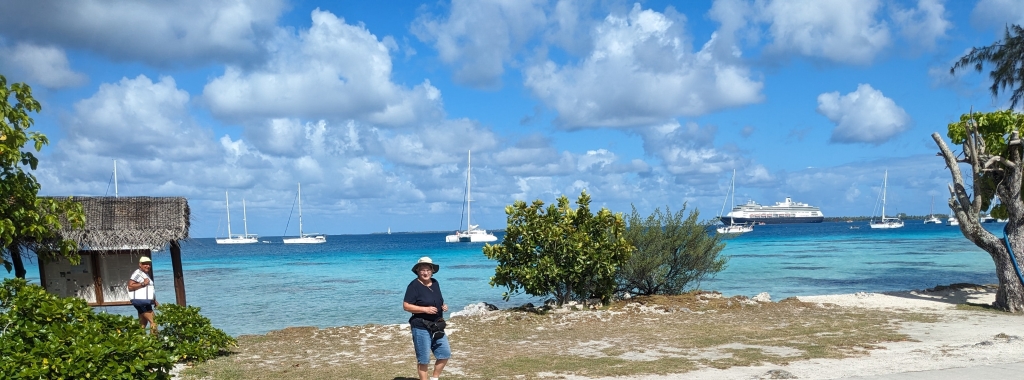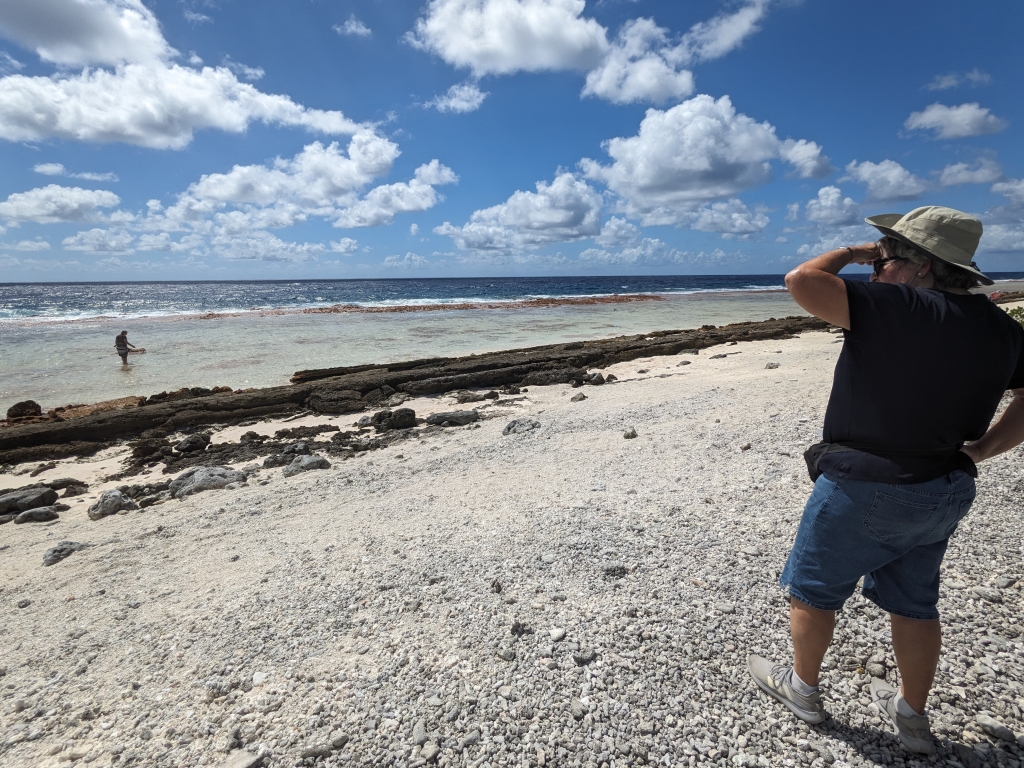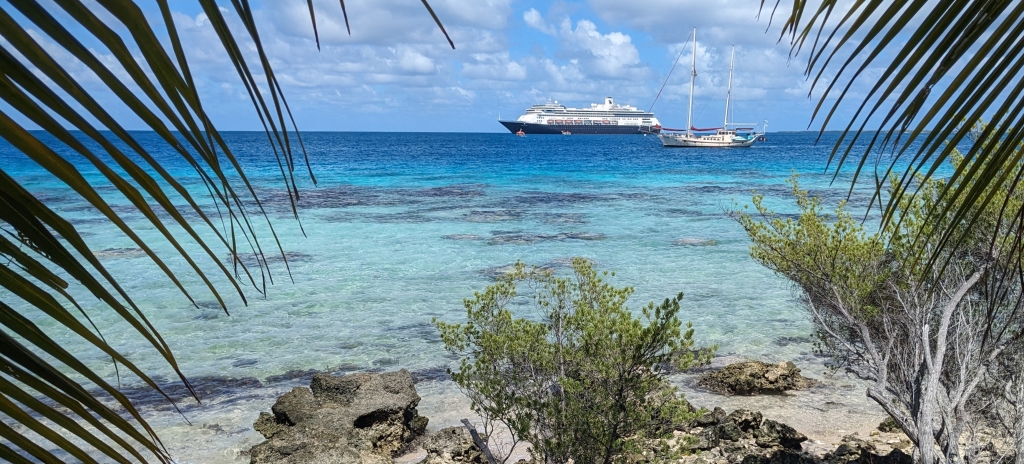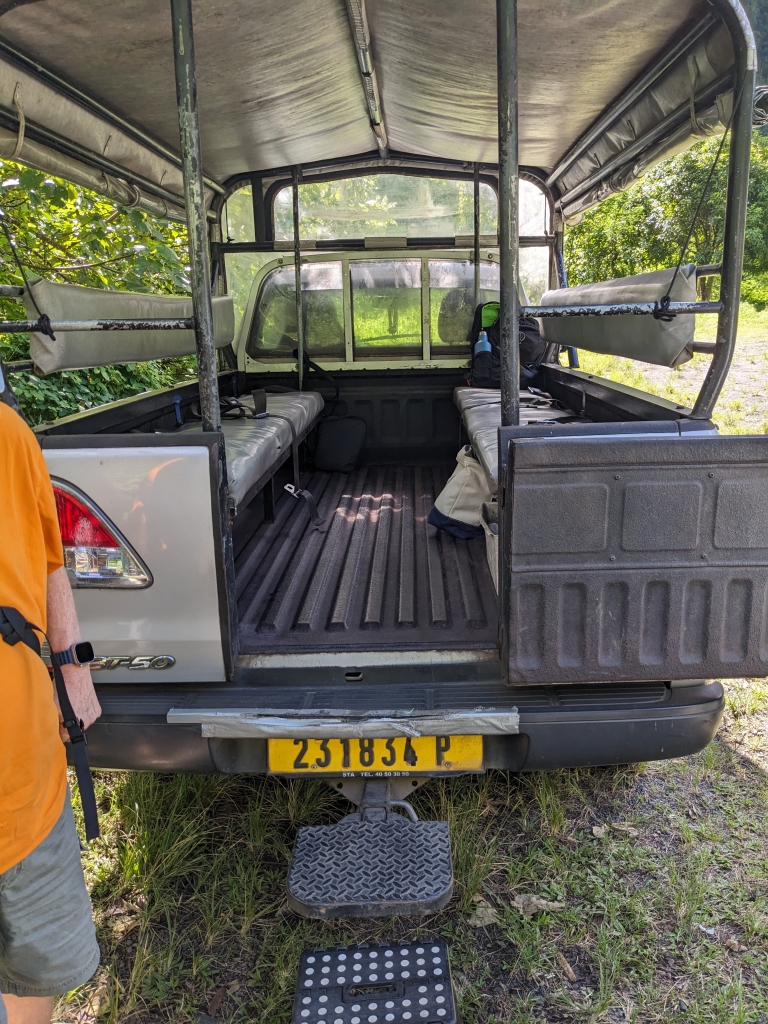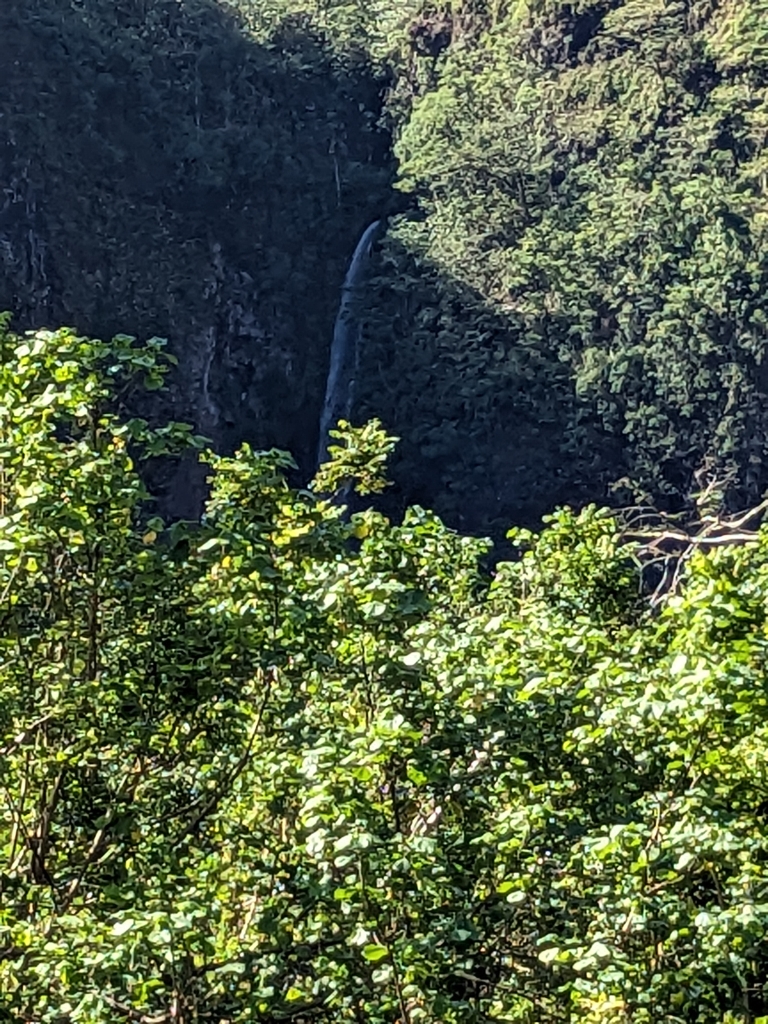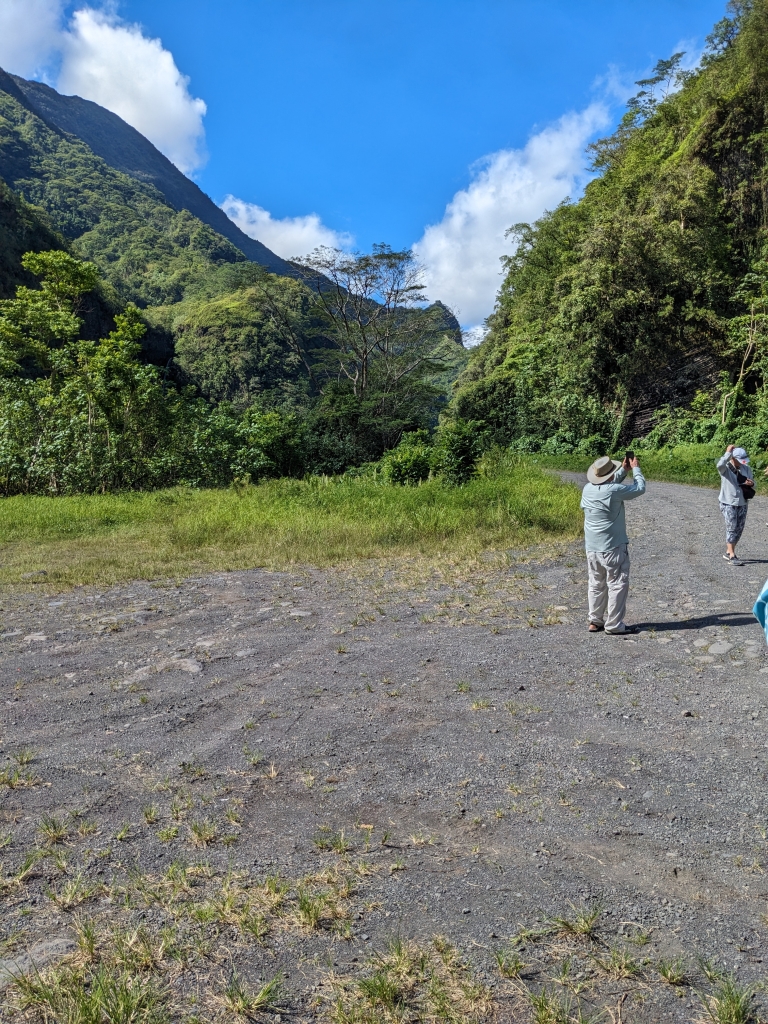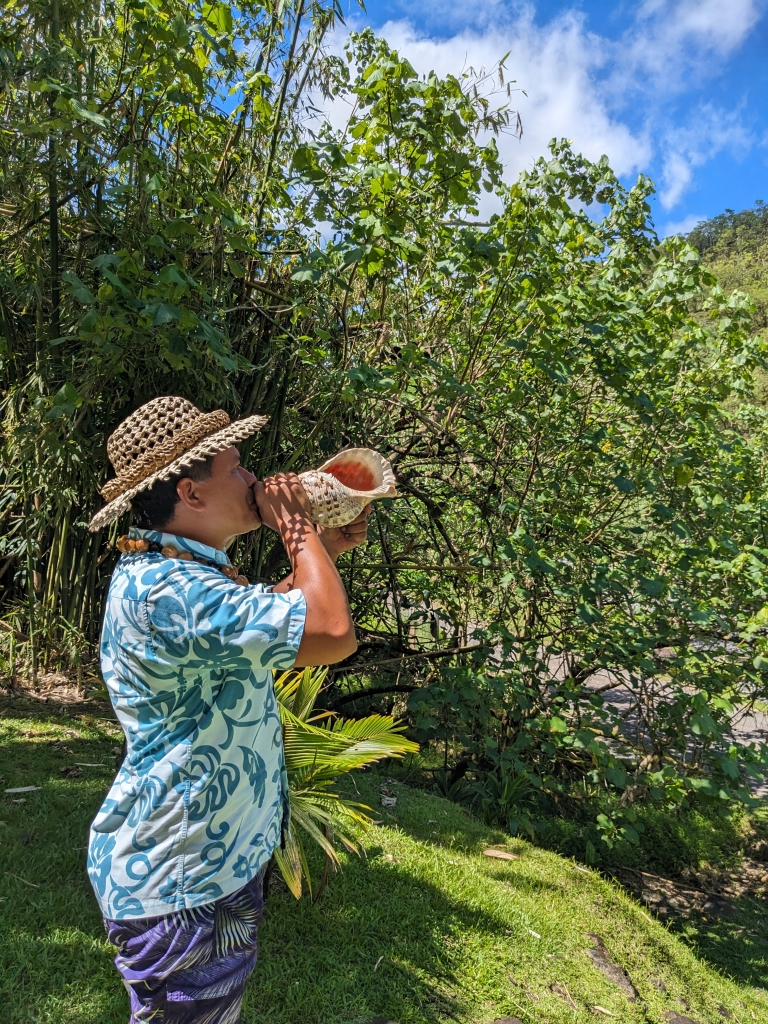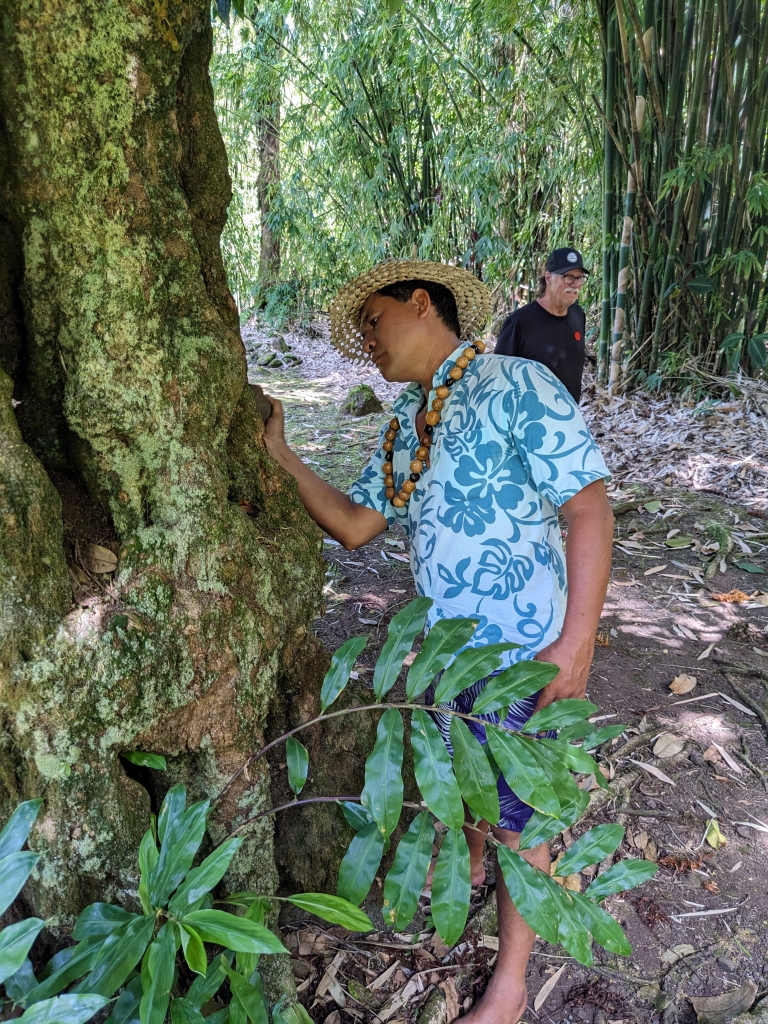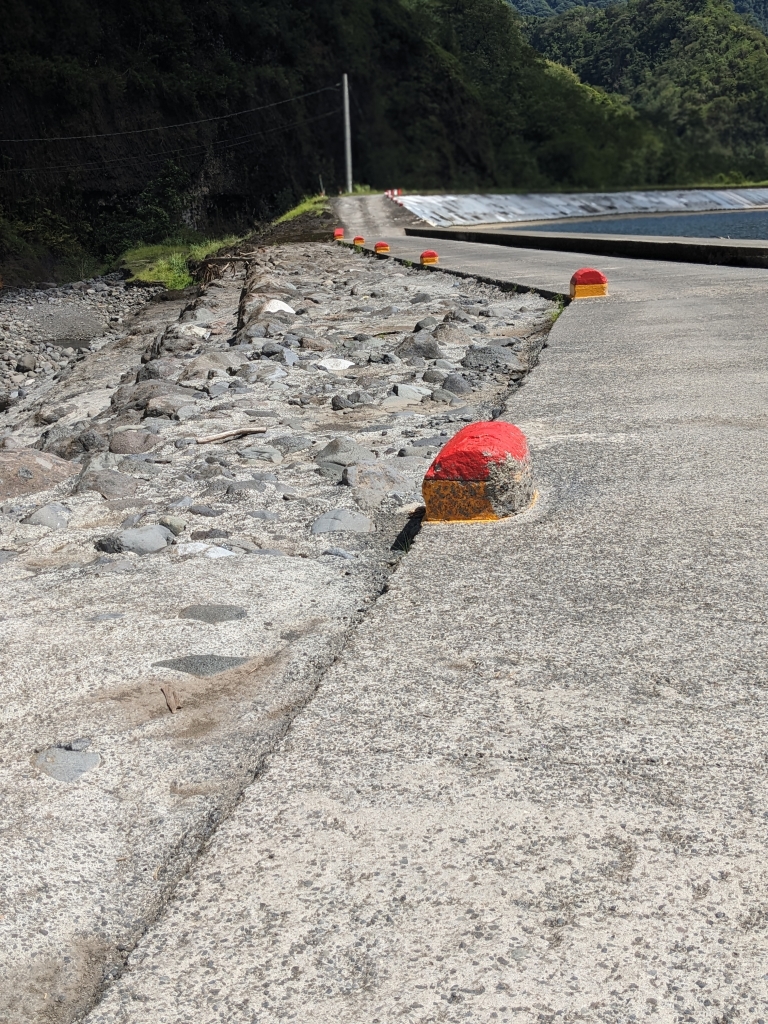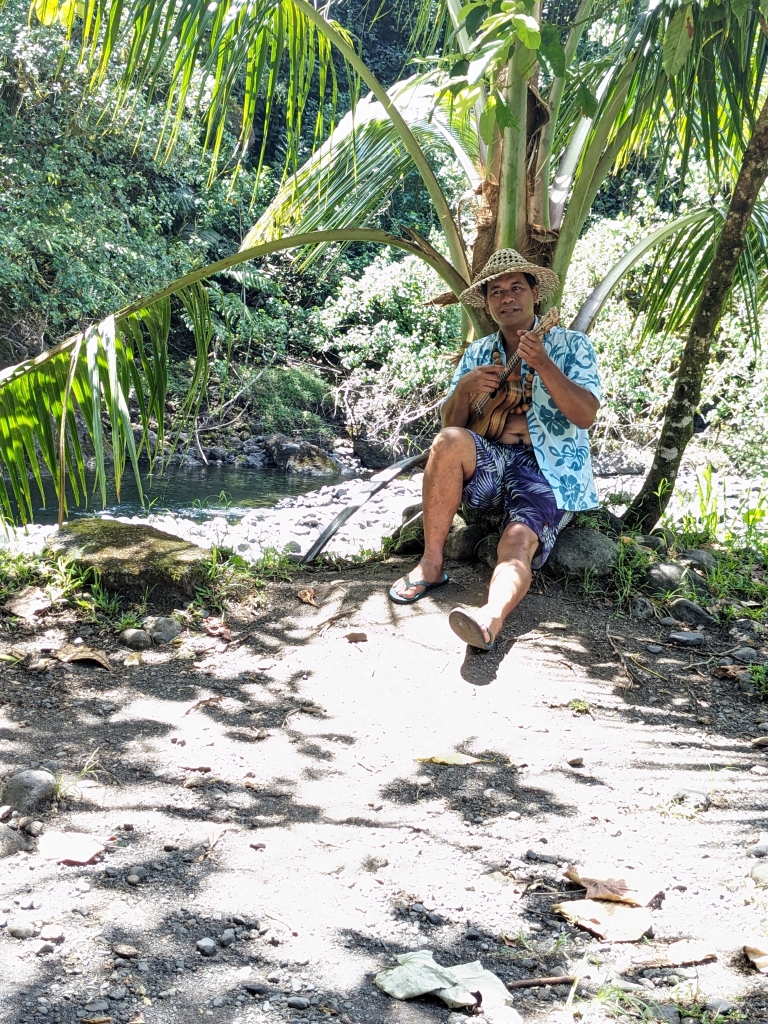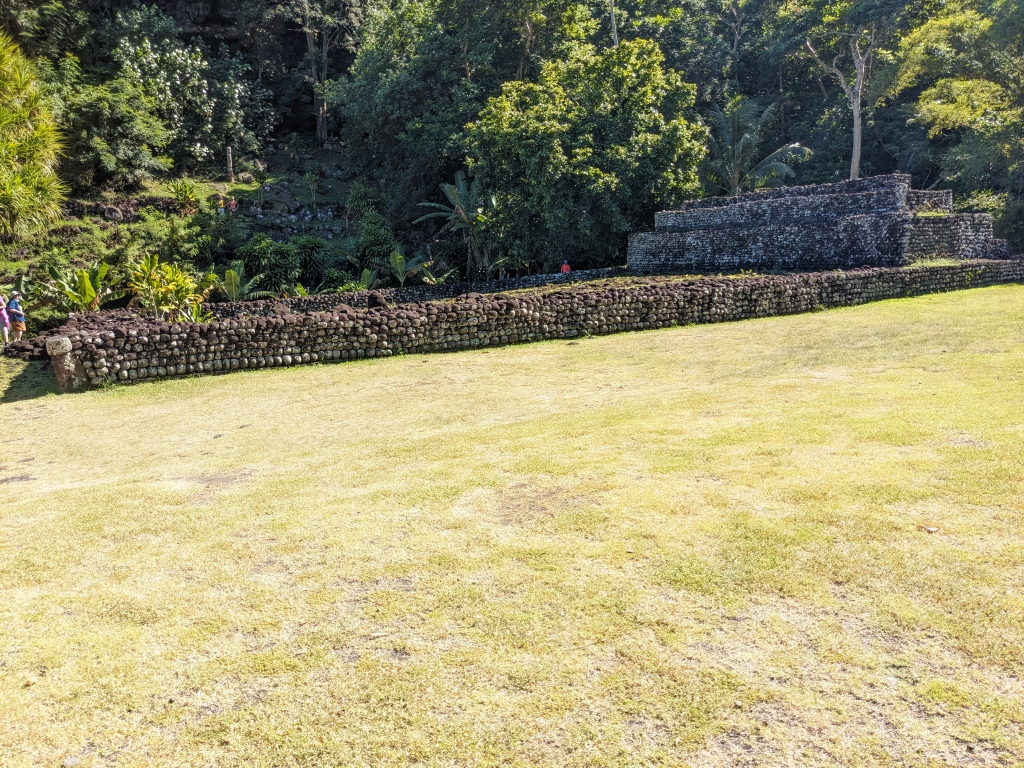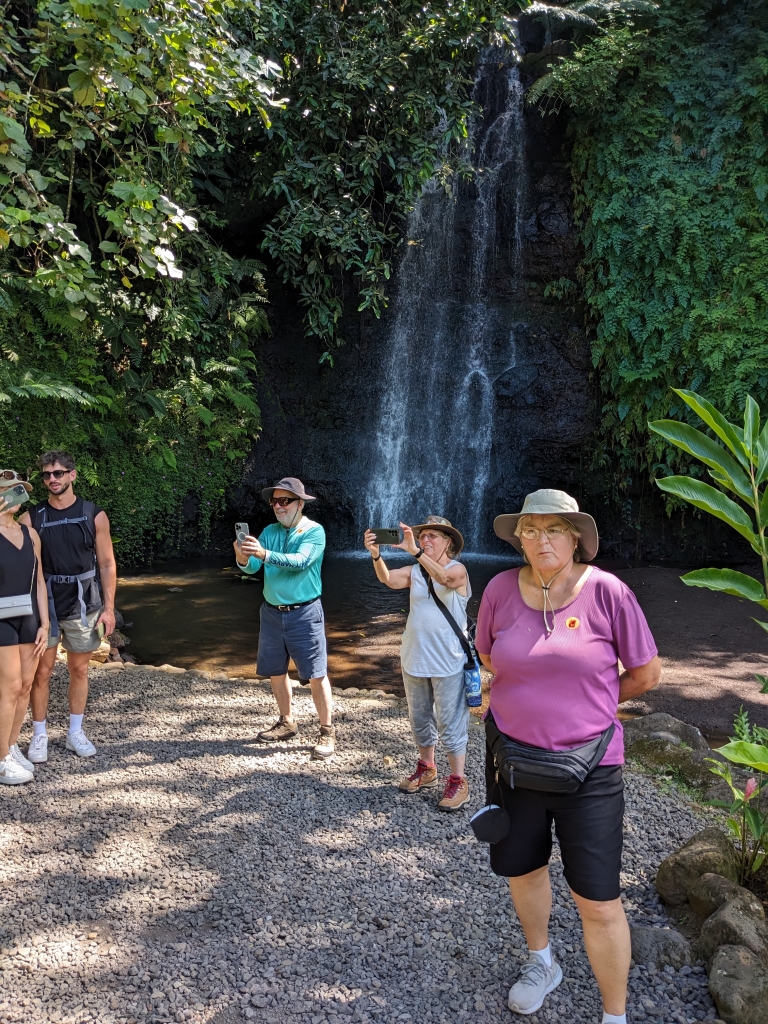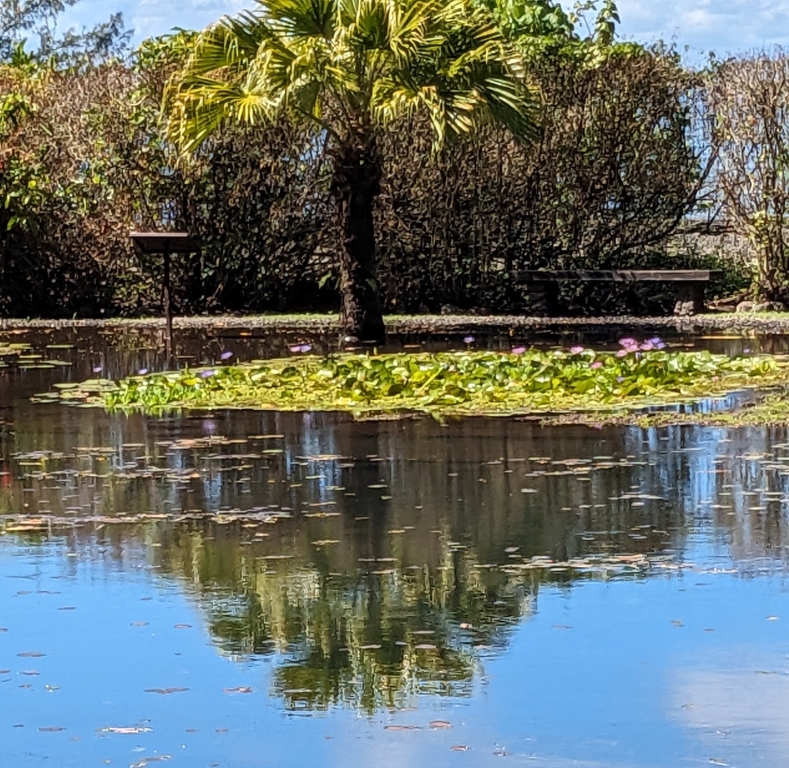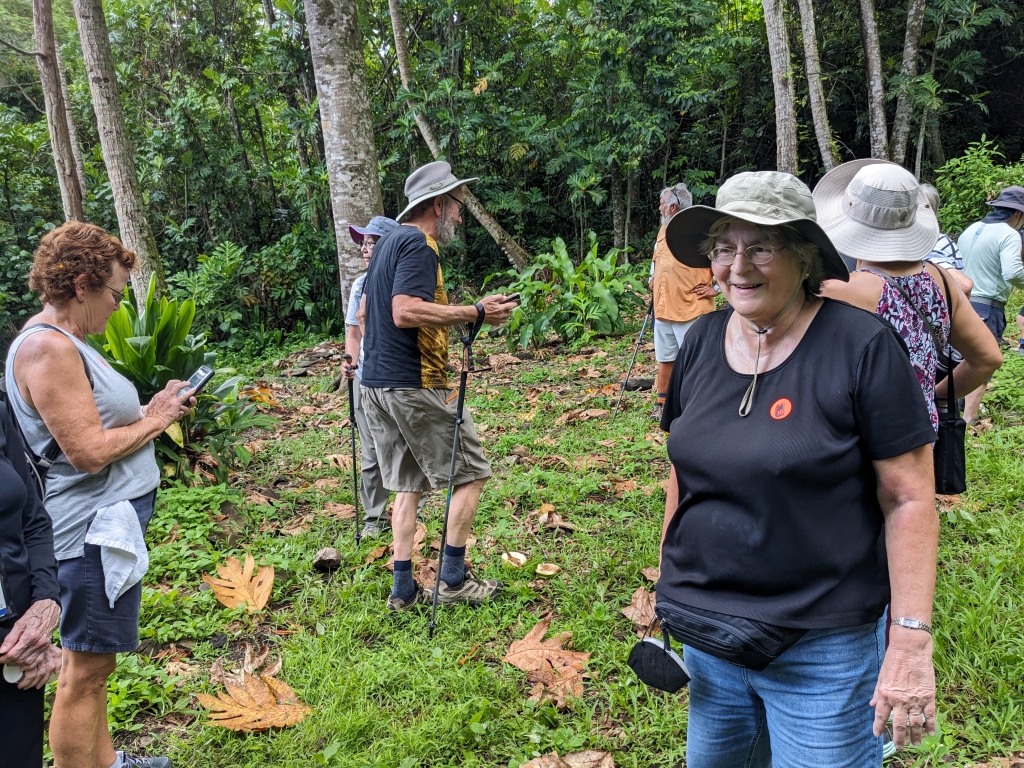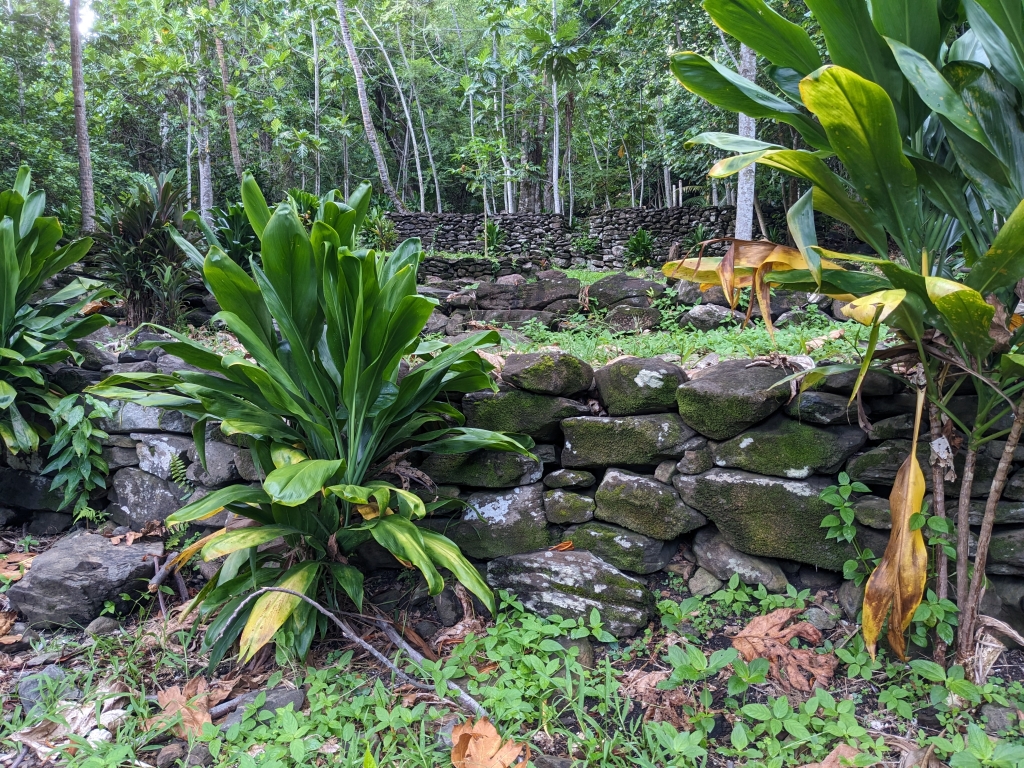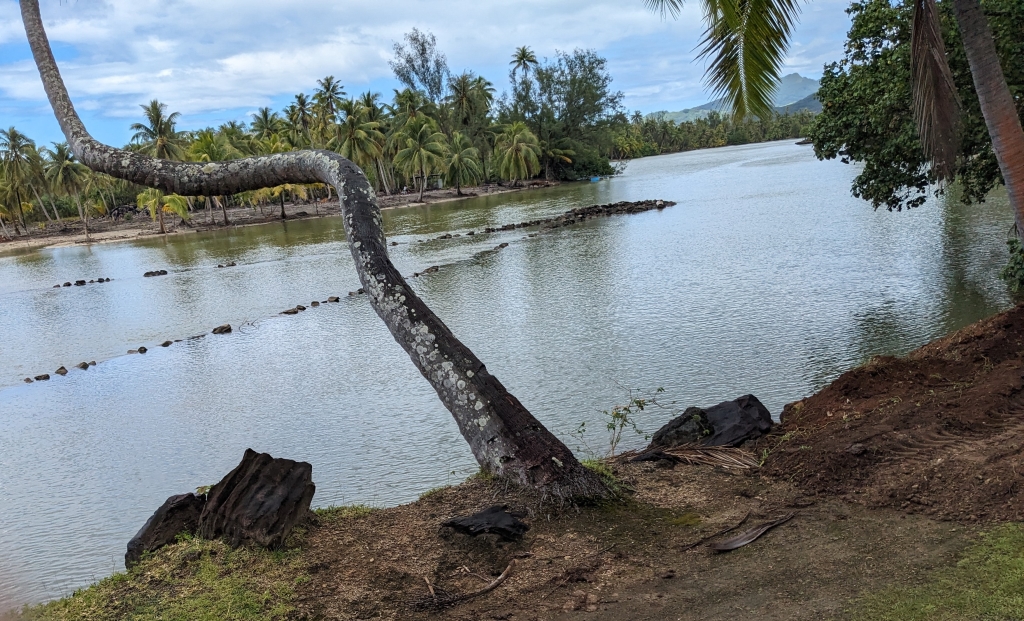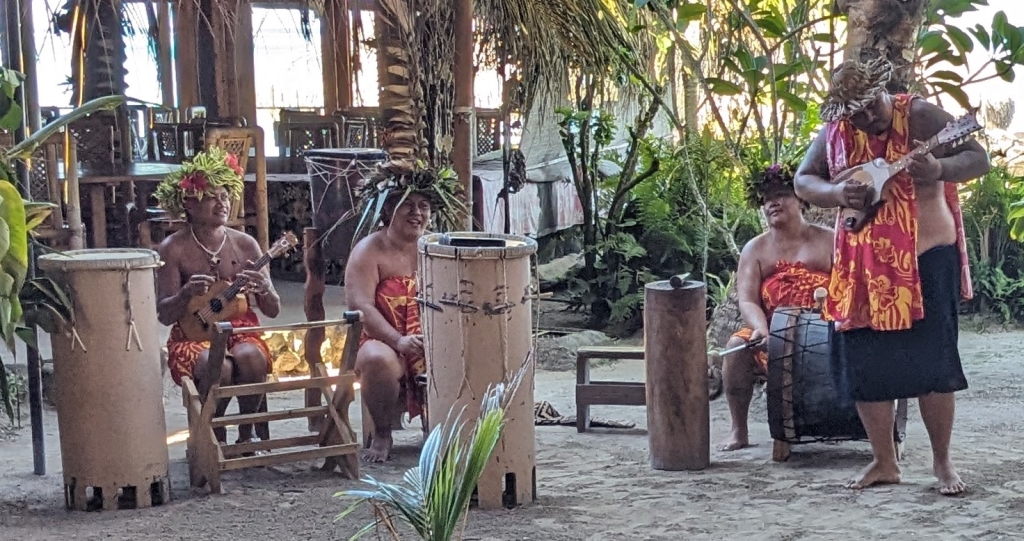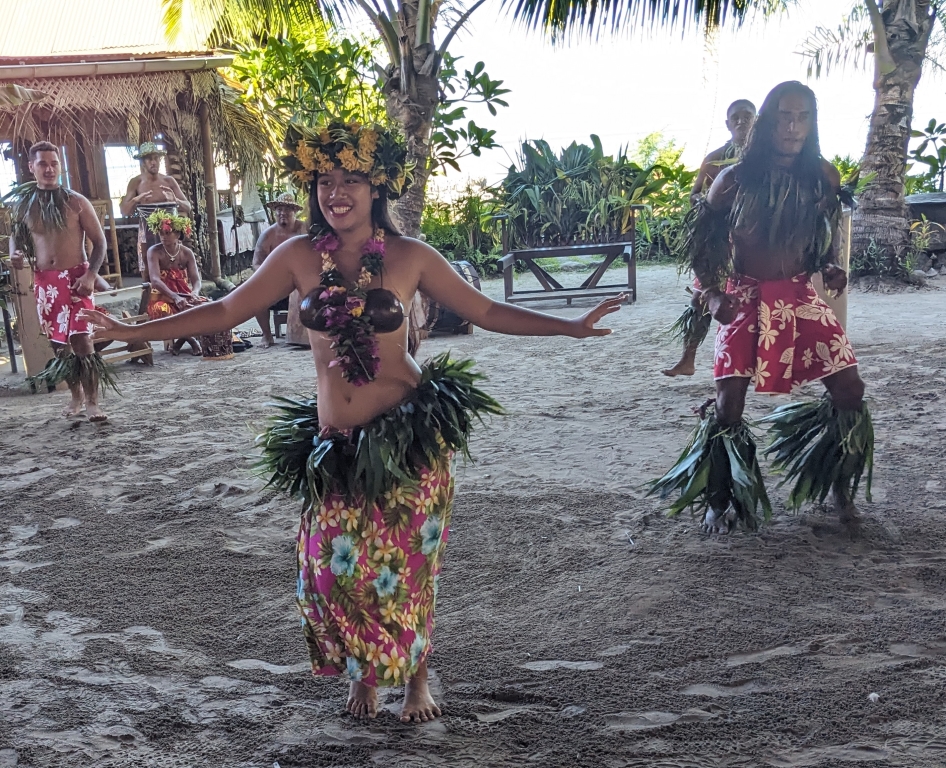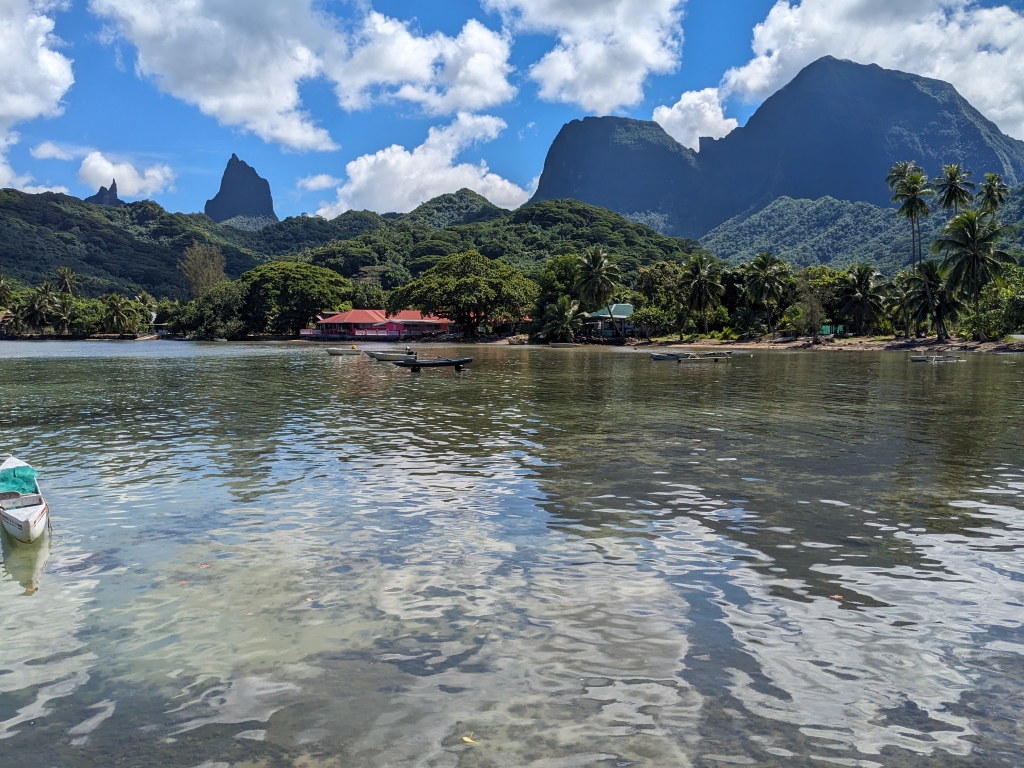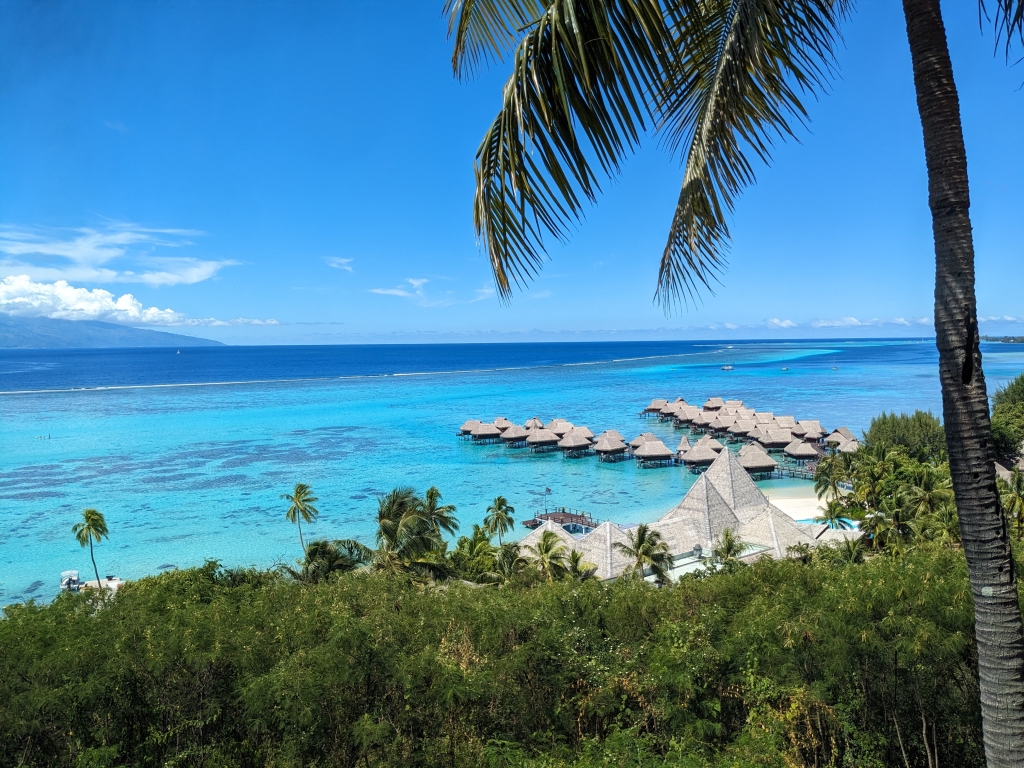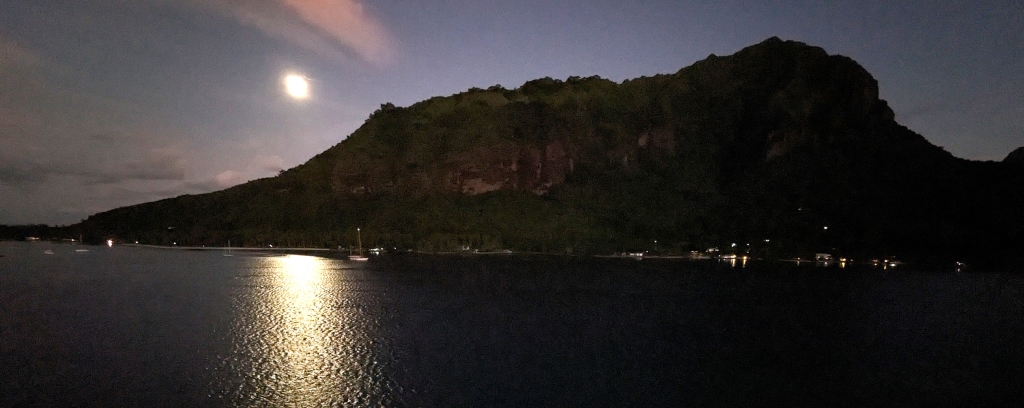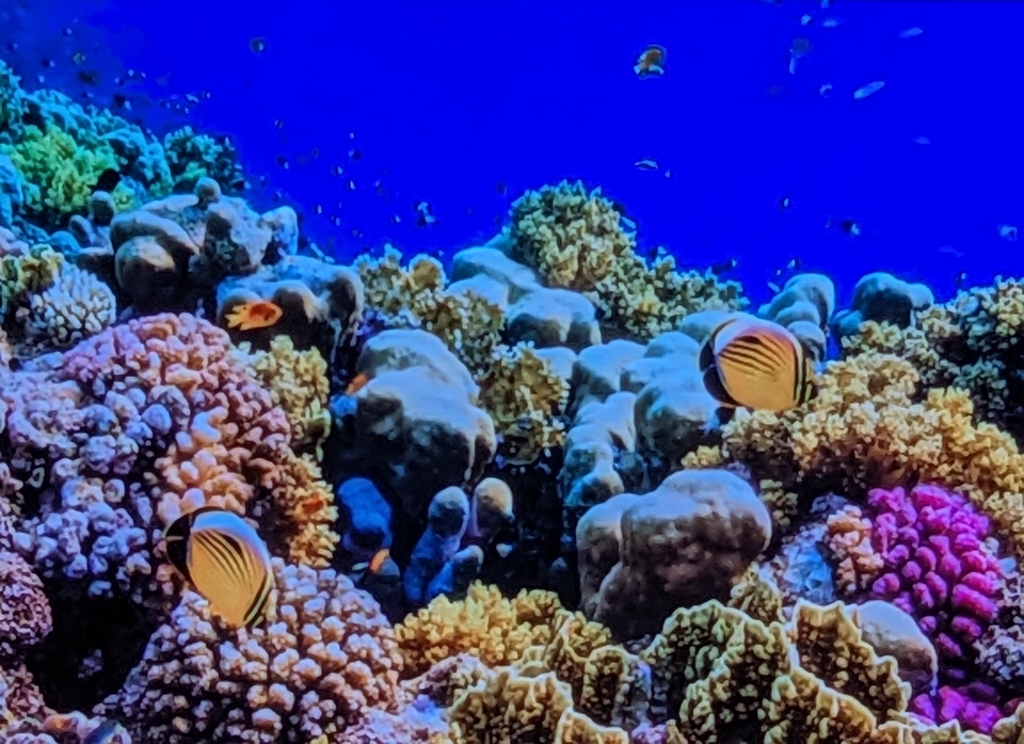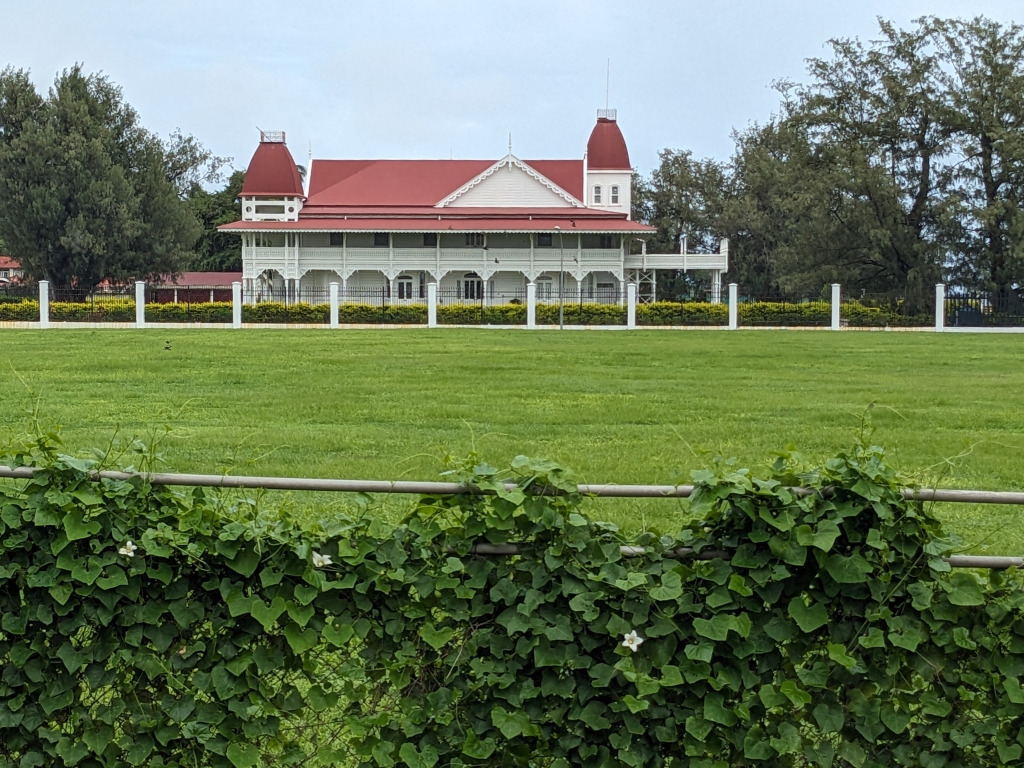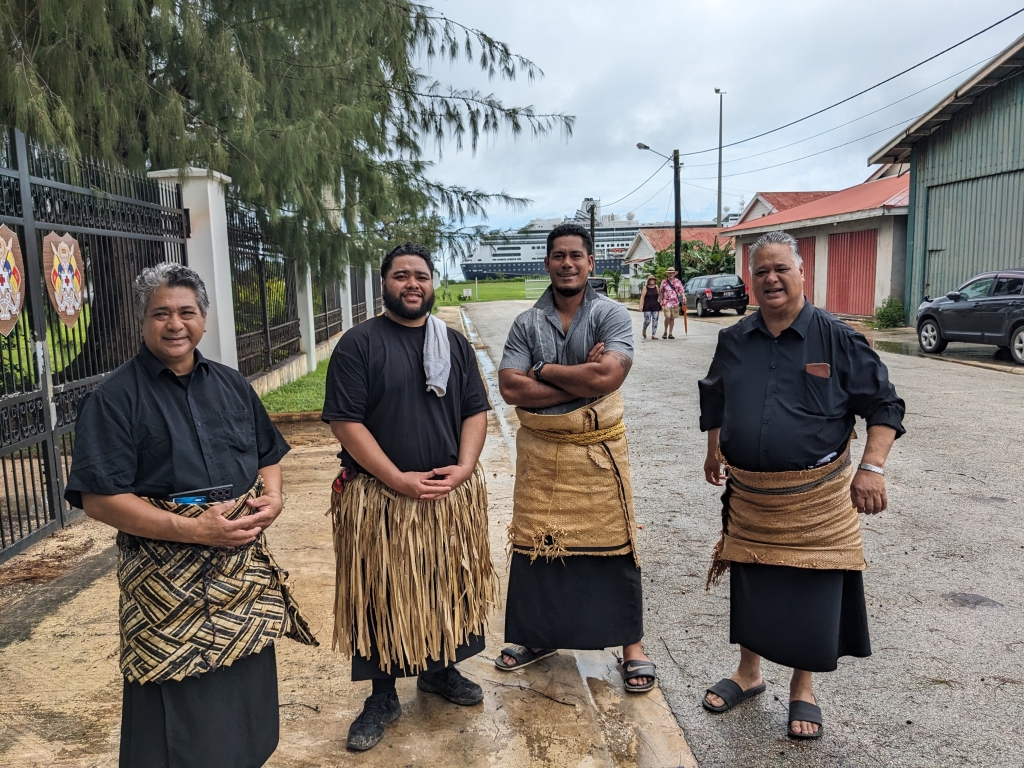Our last stop is the French Polynesian city of Taiohae on the island of Nuku Hiva. I am starting today’s blog with yesterday’s sunset, which was dramatic.

It’s hard to realize the size of these volcanic islands. Here’s a “sail in” shot. Those tiny white dots on the extreme right are Taiohae, which is a respectably large town of 3,000 people.

Before going ashore, it’s important to have a good breakfast. When we got to the dining room, we found amazing Indonesian decorations, all ready for an Indonesian dinner. Danita is still working on her bug eyes, but she got her tongue out there pretty darn good.
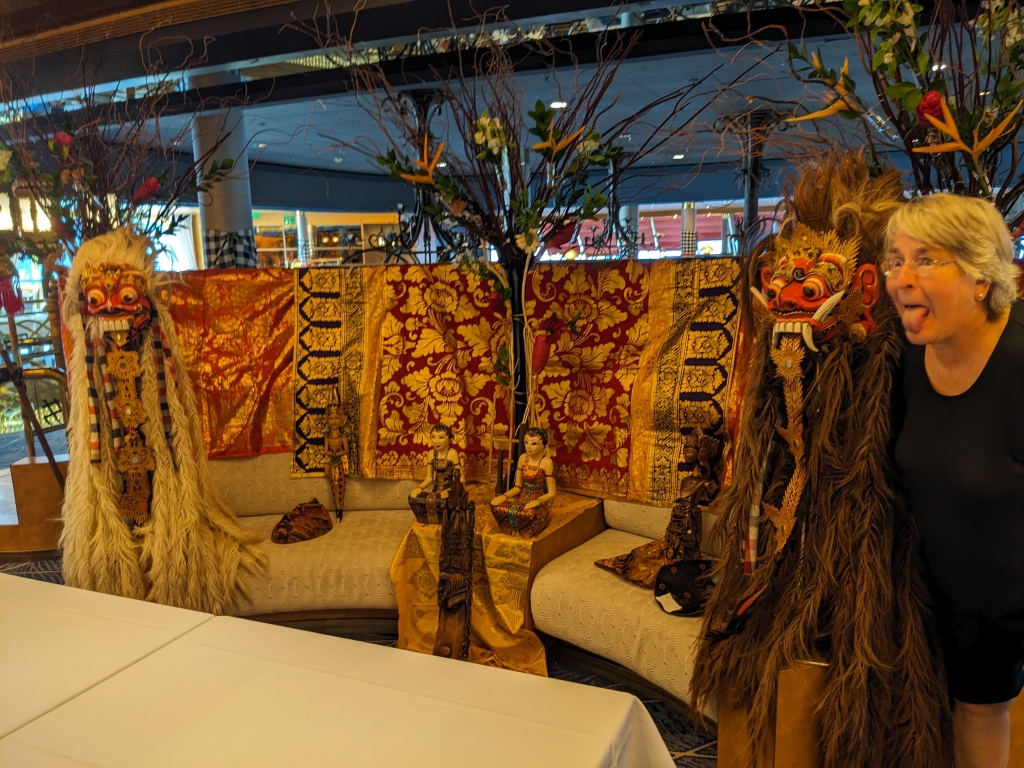
Taiohae has a way cool Tiki Tuhiva. Here you see her back and front. That gentleman has his finger in a hole in Tuhiva’s belly. The story is that if you write your wish on a piece of paper and put it in the hole, Tuhiva might grant your wish. I hear that she prefers to grant the wish of more children.
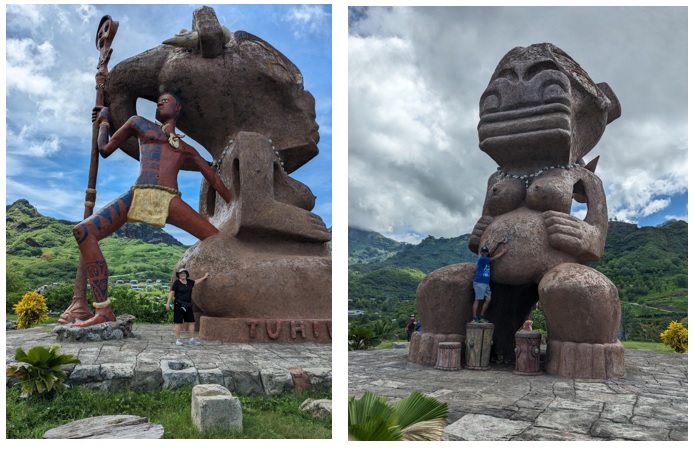
The Catholic Cathedral wouldn’t have a Tiki of course. But they do have some carvings that give a similar vibe. Here you see Danita with “Tiki” Moses (with 10 commandments) and Abraham (ready to sacrifice a goat).
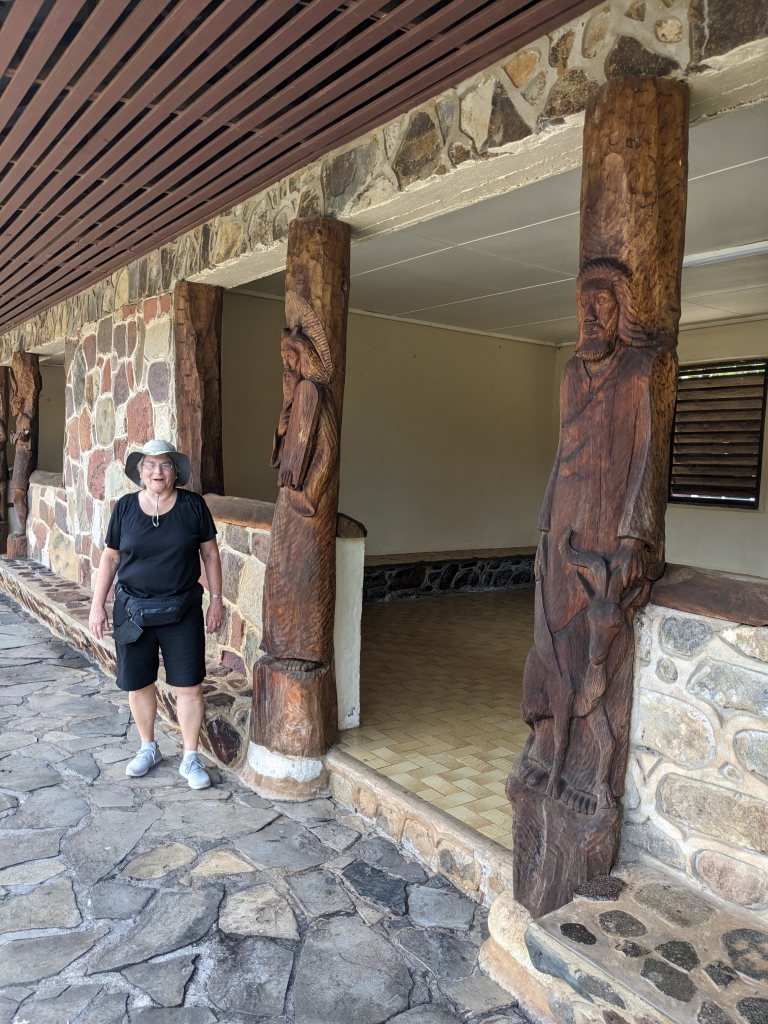
When we leave, there will be a sailing out party with wine and cheese. Danita and I might enjoy the party so much we might not bother with that Indonesian dinner.
We have 5 sea days, disembarking on April 5. There’s not likely to be a anything newsworthy. It will just be 5 days of interesting lectures, movies, evening entertainment, and endless food. We will take the shuttle to the San Diego airport, arriving 5 hours before our flight to Texas. Even I feel comfortable with that much time to get to our plane. I hope this finds everybody doing well.


